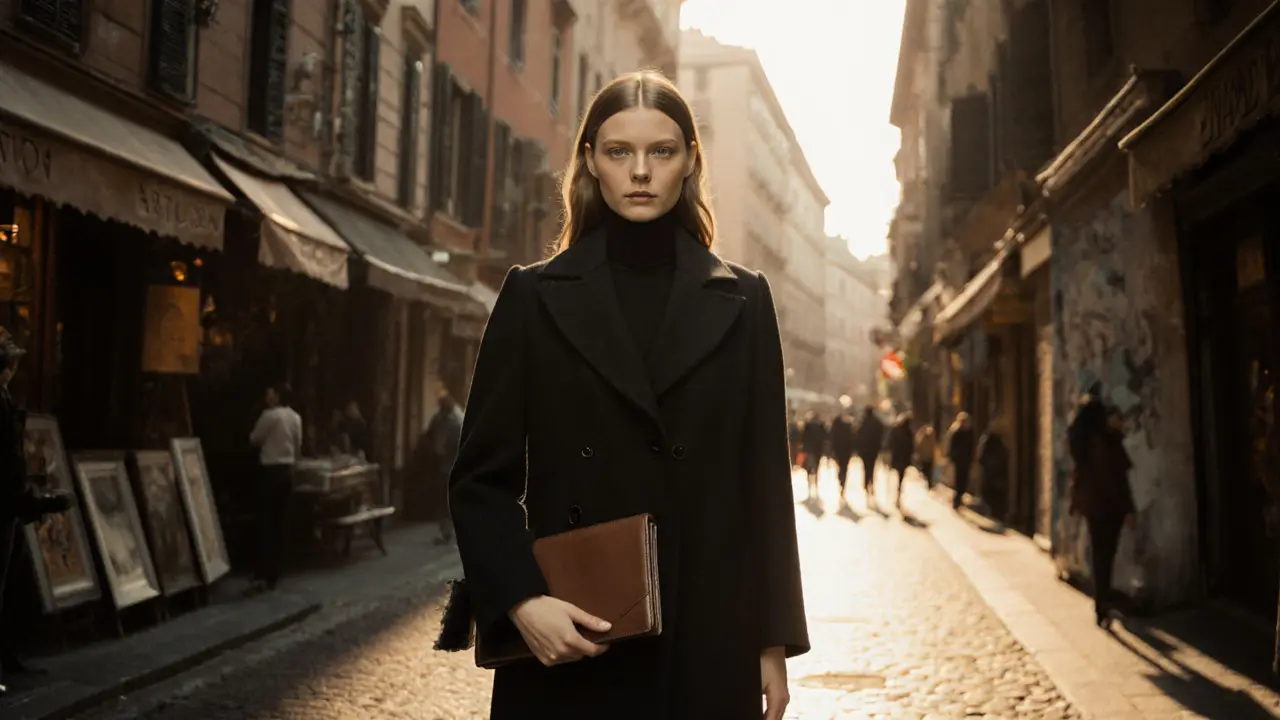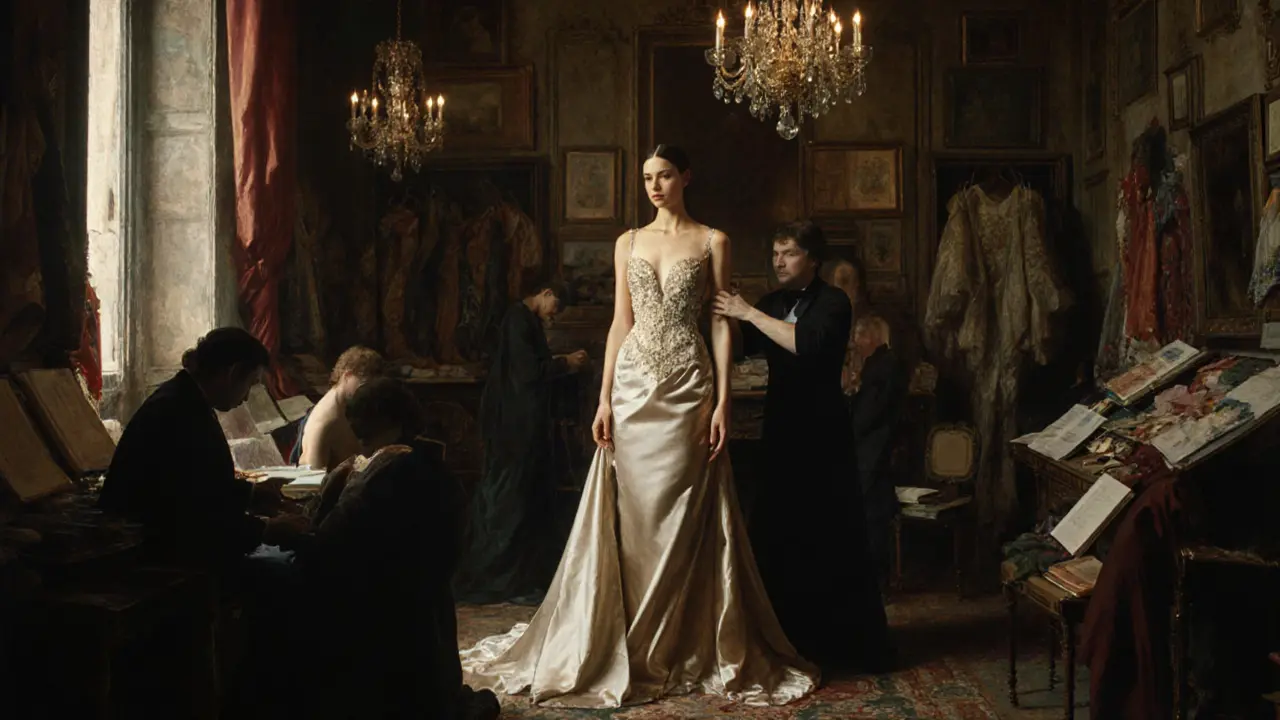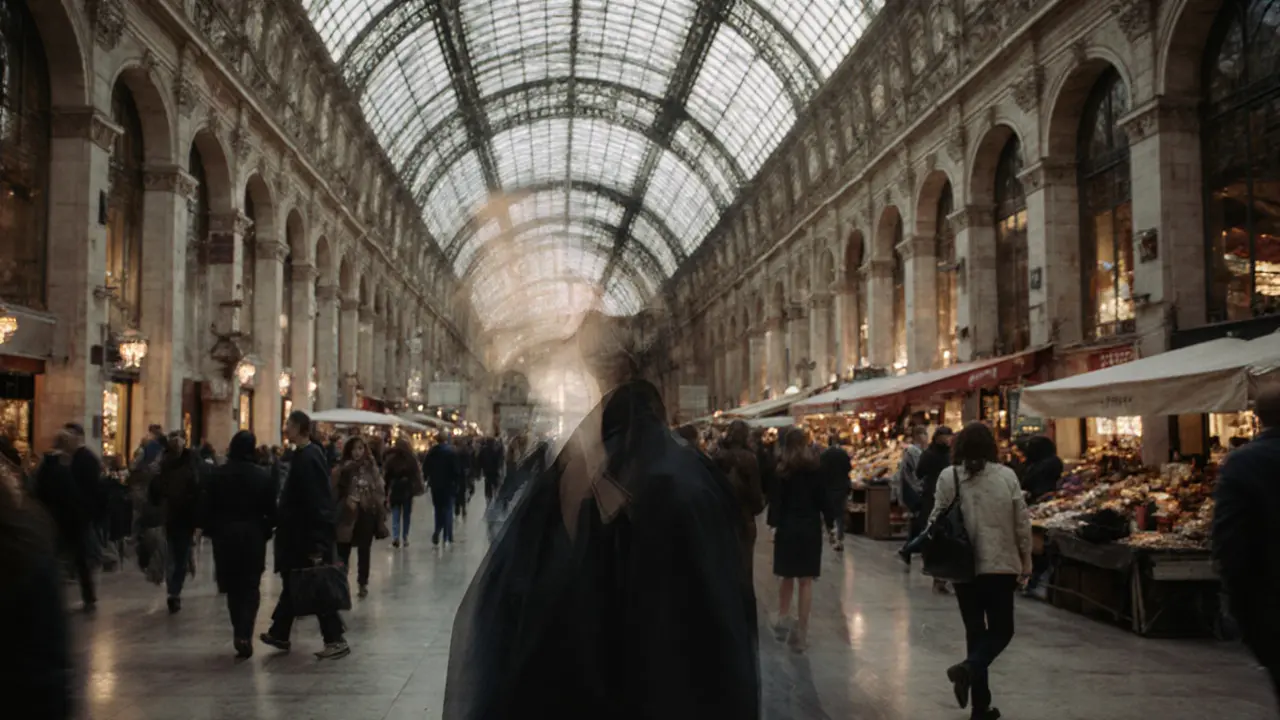Elite Model - Experience True Luxury with Milan’s Best Models

When you think of Milan, you think of runway lights, silk fabrics catching the light, and models who don’t just walk-they command attention. But not every model in Milan is the same. There’s a difference between a face you see in a magazine and an elite model-someone who moves through the city like a silent force, trusted by Valentino, Prada, and Giorgio Armani to embody their vision. These aren’t just faces. They’re curated experiences.
What Makes an Elite Model Different?
An elite model isn’t just tall, thin, or photogenic. Those are baseline traits. What sets them apart is precision. Their walk has rhythm. Their gaze holds intent. They don’t pose-they inhabit the moment. In Milan, where fashion is religion, elite models are the high priests.
Take the 2024 Milan Fashion Week. Out of 1,200 models cast across 87 shows, fewer than 60 were booked for more than three major runway appearances. Those 60? They were elite. They had worked with the same agencies for over five years. They’d been in campaigns for Dolce & Gabbana’s haute couture line, shot by Steven Meisel, and walked for Chanel’s Métiers d’Art collection in Tokyo. They didn’t just show up-they delivered.
Elite models are selected not just for looks, but for presence. Agencies like Models Plus and MP Management don’t just scout-they vet. They look at how a model carries themselves in a room, how they respond to direction, how they handle pressure. One agent told me, “We don’t hire someone because they’re beautiful. We hire them because they make the clothes look like they were made for them.”
The Milan Elite: Who They Are and Where They Work
Most elite models in Milan live in Brera or Navigli-areas where art studios meet espresso bars and vintage boutiques. Their days start with yoga at 6 a.m., followed by a protein-rich breakfast. By 10 a.m., they’re at the agency for casting calls. By noon, they’re on set for a luxury skincare campaign. By 5 p.m., they’re in a private fitting with a designer’s tailors, adjusting hemlines on a hand-stitched gown.
These models don’t work for fast fashion. They work for houses that spend €12,000 on a single fabric swatch. They’re the faces behind the €4,500 handbags, the €20,000 evening gowns, the €1,800 silk scarves. Their images appear in Vogue Italia, Harper’s Bazaar, and the pages of the Financial Times Style supplement-not because they’re trendy, but because they’re timeless.
Some of the most sought-after elite models today are Italian-like Chiara Vittorio, who walked 17 shows in Milan last season, or Sofia Rizzo, who closed Prada’s fall 2024 collection. But it’s not just Italians. A Korean model named Hyejin Park now books more Milan jobs than any other Asian model in the city. A Brazilian, Lívia Costa, was the only non-European model invited to the exclusive Dior Métiers d’Art dinner in 2024. The elite aren’t defined by nationality. They’re defined by consistency.
How Elite Models Are Chosen
There’s no open audition. No Instagram contest. No TikTok viral moment. Elite models are discovered through a quiet, almost secretive process. Agencies send scouts to fashion schools in Bologna, Florence, and even smaller towns in Sicily. They watch students during final presentations. They note posture. They watch how someone holds their head when they speak. They look for stillness in motion.
Once identified, a model is invited to a private meeting-not a casting. It’s a conversation. They’re asked about their values, their goals, their relationship with art. If they pass, they’re signed to a contract that often includes a 30-day training period. During that time, they’re taught how to hold a champagne flute while walking, how to turn their head for a 360-degree camera sweep, how to breathe through a 45-minute photoshoot without blinking.
They’re also trained in etiquette. How to enter a room without seeming entitled. How to thank a designer without sounding rehearsed. How to say “no” to a shoot that doesn’t align with their personal brand. These aren’t just skills-they’re survival tools in a world where one misstep can end a career.

Why Luxury Brands Rely on Elite Models
Luxury isn’t about price. It’s about perception. A €5,000 coat doesn’t sell because of the wool. It sells because of the woman wearing it. An elite model doesn’t just wear the coat-she becomes its story.
Brands like Fendi and Bottega Veneta don’t want models who look like everyone else. They want models who look like they’ve lived a life of quiet elegance. Someone who’s read Proust. Who knows the difference between a 19th-century Venetian lace and a modern jacquard. Who can sit in a private salon and discuss the texture of a hand-painted silk without sounding like they’re reciting a script.
That’s why elite models are often older. Many are in their late 20s or early 30s. They’ve lived. They’ve traveled. They’ve failed. They’ve been rejected. And that depth shows. A 22-year-old can mimic a pose. A 28-year-old can make you believe the pose was born from her soul.
In 2023, a study by the Milan Fashion Institute found that campaigns featuring elite models had 47% higher brand recall than those with standard models. The reason? Authenticity. Not the kind you fake on Instagram. The kind that comes from years of discipline, silence, and focus.
What It’s Like to Work With an Elite Model
If you’ve ever been on a photoshoot, you know the chaos. Lighting crews arguing. Stylists running late. A producer yelling into a headset. But when an elite model walks onto set, everything changes.
They arrive early. They don’t need makeup touch-ups. They don’t ask for water. They don’t check their phone. They stand still. And then, when the shutter clicks, they move like a wave. One second they’re facing the lens. The next, they’re half-turned, eyes closed, hair falling just so. It’s not choreographed. It’s instinct.
Photographers say working with an elite model feels like directing a symphony. You don’t tell them what to do-you guide the mood. One photographer told me, “I don’t say ‘smile.’ I say, ‘Think of your grandmother’s kitchen on a Sunday morning.’ And then-there it is. The look. The quiet joy. The truth.”
Designers feel the same. “When an elite model puts on a dress,” said a head designer at Versace, “it’s like watching the dress come alive. It’s not just fabric. It’s history. It’s silence. It’s power.”

How to Experience an Elite Model in Milan
You won’t find them at tourist spots. You won’t see them taking selfies at the Duomo. But if you know where to look, you’ll spot them.
Head to the Salone del Mobile in April. Watch the models who walk through the design exhibits with quiet intensity. They’re not there to be seen. They’re there to absorb. Go to the private viewings at Galleria Vittorio Emanuele II. The ones in the back, sipping sparkling water, not posting? That’s them.
Or better yet-attend a private fashion presentation. Some agencies offer exclusive viewings for select clients. These aren’t open to the public. You need an invitation. But if you’re connected-through a gallery owner, a luxury hotel concierge, or a high-end fashion buyer-you might get a seat. You’ll see the model in person. Not in a magazine. Not on a screen. In real life. And you’ll understand why they’re called elite.
It’s not about being seen. It’s about being felt.
Why This Matters Beyond Fashion
Elite models are more than fashion icons. They’re symbols of a deeper truth: excellence isn’t loud. It doesn’t shout. It doesn’t need likes. It doesn’t need viral moments. It shows up. It does the work. It stays quiet. And when it speaks, the room listens.
That’s the lesson Milan teaches. You don’t become elite by chasing trends. You become elite by mastering the fundamentals-over and over again. By showing up when no one’s watching. By choosing quality over quantity. By letting your presence do the talking.
Whether you’re in fashion, business, or art-if you want to be truly exceptional-you don’t need more followers. You need more discipline. More silence. More depth.
And if you ever find yourself in Milan, walking past a quiet woman in a black coat, holding a leather portfolio, not smiling for the camera-don’t look away. She’s not just a model. She’s the quiet force behind everything beautiful.
What defines an elite model in Milan?
An elite model in Milan is defined by precision, presence, and consistency-not just appearance. They’re selected by top agencies after years of vetting, trained in posture, etiquette, and emotional expression, and trusted by luxury houses like Prada, Armani, and Dior to embody their brand’s soul. They work on high-end campaigns, not fast fashion, and are known for their ability to transform clothing into narrative.
How are elite models different from regular models?
Regular models often rely on looks and trends. Elite models bring depth, discipline, and emotional intelligence. They’ve worked for years with top photographers and designers, understand fashion history, and can adapt their energy to match a brand’s vision without being told. They don’t need direction-they anticipate it.
Can you meet elite models in Milan as a tourist?
You won’t bump into them at tourist attractions. But during Milan Fashion Week, they attend private showings, gallery openings, and design events. To see them in person, you typically need an invitation-through a luxury hotel, fashion buyer, or gallery owner. Their presence is subtle, intentional, and rarely public.
Are elite models only Italian?
No. While many elite models in Milan are Italian, the category is global. Models from Korea, Brazil, Japan, and South Africa now regularly book top Milan jobs. What matters isn’t nationality-it’s professionalism, adaptability, and the ability to embody luxury with authenticity.
Why do luxury brands pay so much for elite models?
Luxury brands aren’t selling clothes-they’re selling emotion, heritage, and aspiration. Elite models carry that weight. Studies show campaigns with elite models have 47% higher brand recall. Their stillness, experience, and quiet confidence make the product feel timeless, not trendy. That’s worth millions.

Angie Torres
October 29, 2025 AT 00:17This whole post is just rich people propaganda. Models get paid to stand there and look pretty. No one needs to know how they hold a champagne flute.
Sharon Chui
October 29, 2025 AT 07:56Ever wonder why these so-called elite models never talk about the agencies that control them like puppets? The same ones who scrub their faces in editing, starve them into submission, and silence them with NDAs? This isn't luxury-it's a cult with a runway.
They call it 'presence' but it's just programmed silence. They're not high priests-they're haunted mannequins in silk suits. And the designers? They know. They just don't care as long as the money keeps flowing.
That 'quiet elegance'? It's the quiet of someone who's been told to never say no. The 'depth'? It's trauma wrapped in Armani.
Next time you see one of these 'elite' faces on a billboard, ask yourself: who really owns her soul?
Marie-Eve Beaupré
October 29, 2025 AT 12:55Let’s break this down statistically. The article claims fewer than 60 out of 1,200 models booked more than three major shows-that’s 5%. But without access to the agencies’ internal booking logs or contract durations, we can’t verify if that’s a sampling bias or actual elite status. Also, the 47% brand recall figure cited from the Milan Fashion Institute-no source, no study ID. That’s red flag territory.
Plus, the assumption that older models are inherently more ‘authentic’ ignores the fact that many are forced into longevity because they can’t get cast as ‘youthful’ anymore. This reads like PR masquerading as insight.
Kristin Briggs
October 31, 2025 AT 07:48Okay but let’s be real-the real magic isn’t the walk or the gaze or the ‘presence.’ It’s the fact that these models have been trained to operate like living AI. They don’t blink on cue because they’re zen. They’ve had biofeedback sessions to regulate their autonomic nervous system. They’ve done 300 takes of turning their head at a 17-degree angle until their neck muscles memorized it.
And don’t get me started on the ‘no Instagram’ myth. Half of them have private Instagrams with 50K followers and a team of three assistants managing their ‘quiet’ aesthetic. The ‘silence’? It’s curated. The ‘depth’? It’s a brand strategy.
They’re not high priests. They’re performance engineers in human form. And honestly? That’s even more impressive.
Sean Phoenix
October 31, 2025 AT 22:11So let me get this straight-you’re telling me the same people who profit off of women starving themselves are now selling us ‘quiet elegance’ as some kind of moral virtue?
And you think this isn’t all orchestrated by the same conglomerates that control the media, the fashion schools, the beauty standards, and now even your idea of ‘authenticity’?
They don’t want you to see the system. They want you to romanticize the victim. The elite model isn’t a symbol of excellence-she’s the perfect product of a system that turned human beings into walking logos.
And you’re buying it. You’re literally buying it. With your clicks. Your admiration. Your envy.
Wake up. The quiet force? It’s the force of capitalism wearing a silk dress.
Erika Hernández
November 1, 2025 AT 11:11Okay but I just want to say this is one of the most beautiful things I’ve read in ages.
It’s not just about fashion-it’s about showing up quietly, doing the work, not needing applause, and letting your craft speak. I’ve been stuck in my job for years, chasing likes and validation, and this reminded me that real excellence doesn’t scream.
That line about ‘the dress coming alive’? I cried. Not because I care about fashion, but because I finally understood what it means to be truly good at something.
If you’re reading this and you’re trying to be great at anything-art, coding, parenting, cooking-this is your sign. Stop performing. Start being. The world doesn’t need more noise. It needs more quiet force.
vincent ngeso
November 2, 2025 AT 17:04I met one of these models last year at a little café near Brera. She was just sitting there reading a book in a hoodie. No makeup. No phone. Just sipping espresso like she owned the silence. I didn’t say anything. Didn’t take a pic. Just nodded. She nodded back. And I swear for the rest of the day I walked different. Like I carried something heavier. Something real.
They’re not models. They’re quiet legends. And we’re lucky to even catch a glimpse.